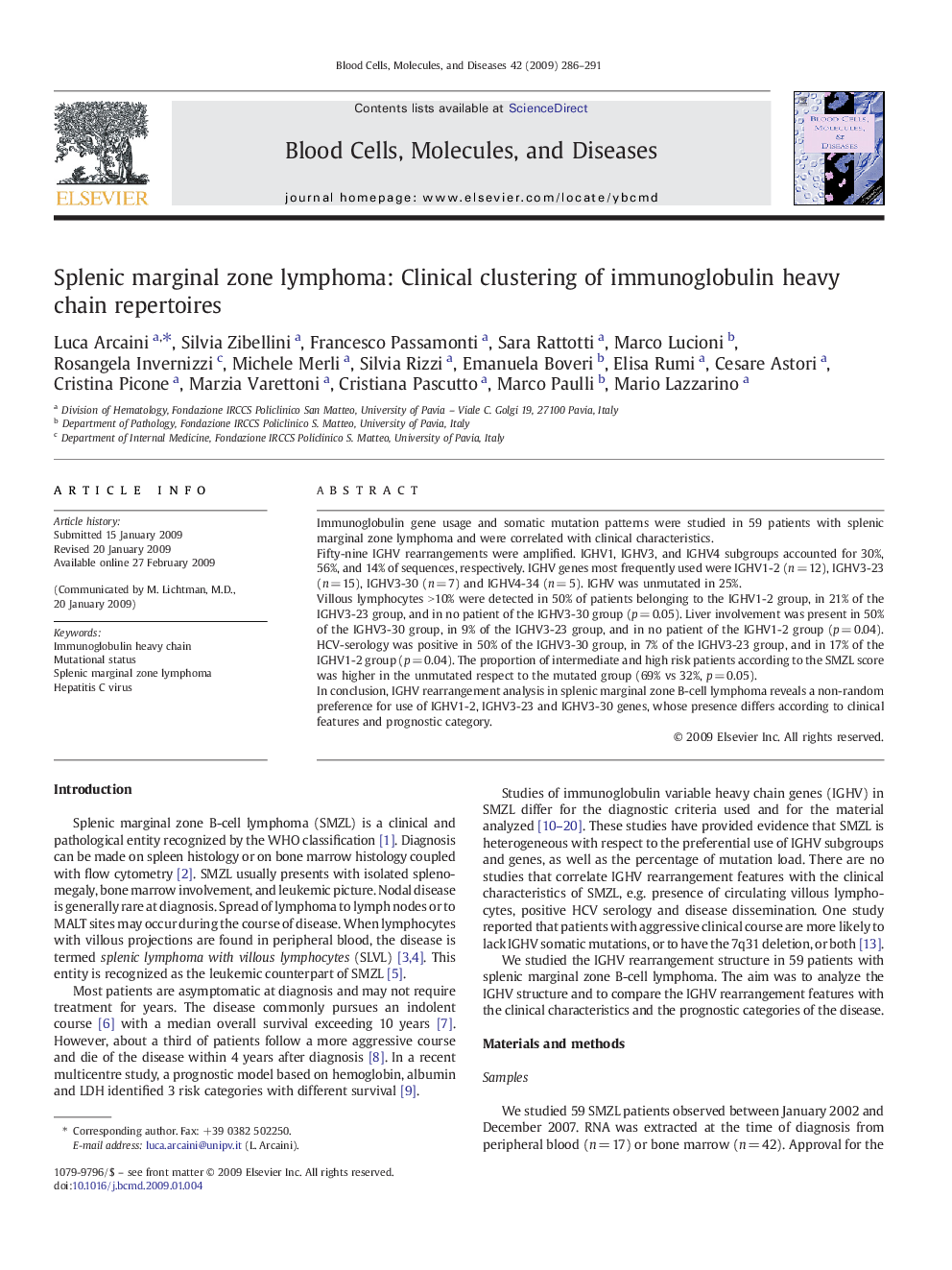| Article ID | Journal | Published Year | Pages | File Type |
|---|---|---|---|---|
| 2827736 | Blood Cells, Molecules, and Diseases | 2009 | 6 Pages |
Immunoglobulin gene usage and somatic mutation patterns were studied in 59 patients with splenic marginal zone lymphoma and were correlated with clinical characteristics.Fifty-nine IGHV rearrangements were amplified. IGHV1, IGHV3, and IGHV4 subgroups accounted for 30%, 56%, and 14% of sequences, respectively. IGHV genes most frequently used were IGHV1-2 (n = 12), IGHV3-23 (n = 15), IGHV3-30 (n = 7) and IGHV4-34 (n = 5). IGHV was unmutated in 25%.Villous lymphocytes > 10% were detected in 50% of patients belonging to the IGHV1-2 group, in 21% of the IGHV3-23 group, and in no patient of the IGHV3-30 group (p = 0.05). Liver involvement was present in 50% of the IGHV3-30 group, in 9% of the IGHV3-23 group, and in no patient of the IGHV1-2 group (p = 0.04). HCV-serology was positive in 50% of the IGHV3-30 group, in 7% of the IGHV3-23 group, and in 17% of the IGHV1-2 group (p = 0.04). The proportion of intermediate and high risk patients according to the SMZL score was higher in the unmutated respect to the mutated group (69% vs 32%, p = 0.05).In conclusion, IGHV rearrangement analysis in splenic marginal zone B-cell lymphoma reveals a non-random preference for use of IGHV1-2, IGHV3-23 and IGHV3-30 genes, whose presence differs according to clinical features and prognostic category.
